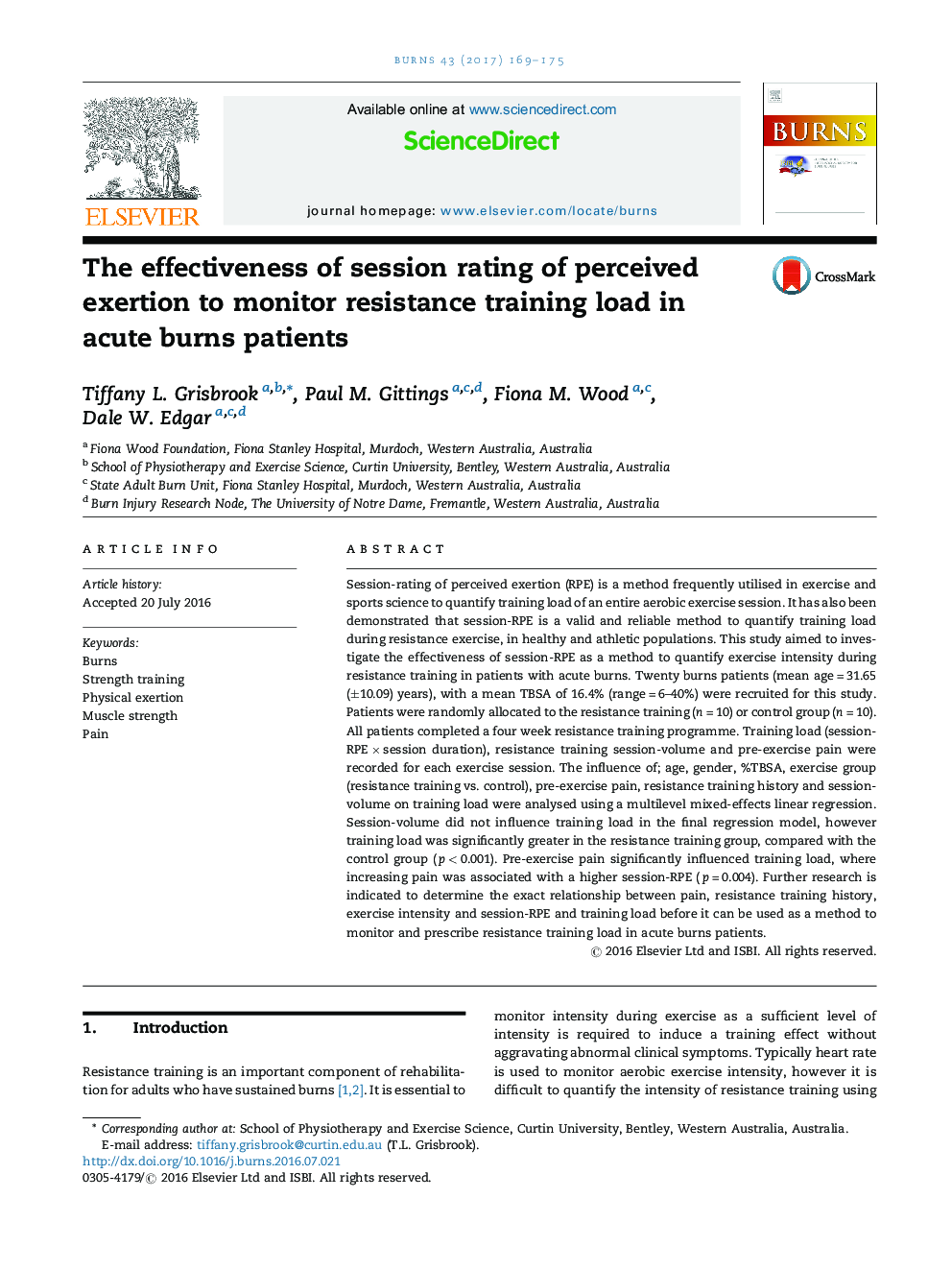| Article ID | Journal | Published Year | Pages | File Type |
|---|---|---|---|---|
| 5636124 | Burns | 2017 | 7 Pages |
â¢Session-RPE can quantify resistance training load in individuals with acute burns.â¢%TBSA, age, gender and training history do not influence session-RPE.â¢Pain significantly influences session-RPE.
Session-rating of perceived exertion (RPE) is a method frequently utilised in exercise and sports science to quantify training load of an entire aerobic exercise session. It has also been demonstrated that session-RPE is a valid and reliable method to quantify training load during resistance exercise, in healthy and athletic populations. This study aimed to investigate the effectiveness of session-RPE as a method to quantify exercise intensity during resistance training in patients with acute burns. Twenty burns patients (mean age = 31.65 (±10.09) years), with a mean TBSA of 16.4% (range = 6-40%) were recruited for this study. Patients were randomly allocated to the resistance training (n = 10) or control group (n = 10). All patients completed a four week resistance training programme. Training load (session-RPE Ã session duration), resistance training session-volume and pre-exercise pain were recorded for each exercise session. The influence of; age, gender, %TBSA, exercise group (resistance training vs. control), pre-exercise pain, resistance training history and session-volume on training load were analysed using a multilevel mixed-effects linear regression. Session-volume did not influence training load in the final regression model, however training load was significantly greater in the resistance training group, compared with the control group (p < 0.001). Pre-exercise pain significantly influenced training load, where increasing pain was associated with a higher session-RPE (p = 0.004). Further research is indicated to determine the exact relationship between pain, resistance training history, exercise intensity and session-RPE and training load before it can be used as a method to monitor and prescribe resistance training load in acute burns patients.
